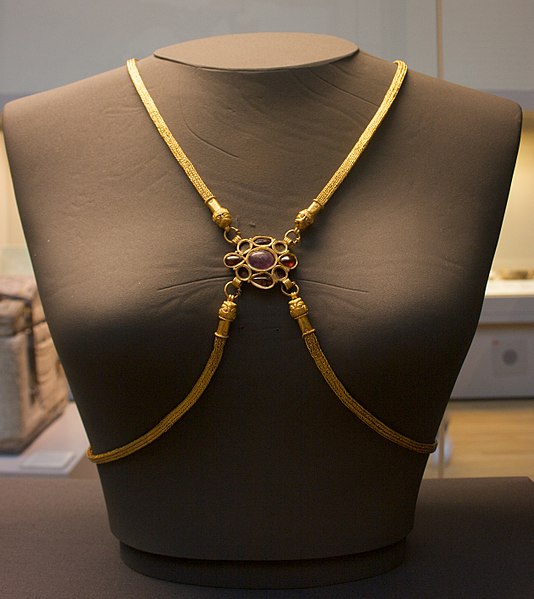"Clipped" Roman coins

Things you find reading a piece about the "Hoxne hoard," which included almost 15 THOUSAND Roman gold, silver, and bronze coins. Apparently clipping was rampant in that era; almost every silver siliqua in the hoard has been clipped. I found it interesting that a second reason was given for coin clipping: "a deliberate attempt to maintain a stable ratio between gold and silver coins."
Gold body chain of the Roman era

The most important gold item in the [Hoxne] hoard is the body chain, which consists of four finely looped gold chains, made using the "loop-in-loop" method called "fox tail" in modern jewellery, and attached at front and back to plaques. At the front, the chains have terminals in the shape of lions' heads and the plaque has jewels mounted in gold cells, with a large amethyst surrounded by four smaller garnets alternating with four empty cells, which probably held pearls that have decayed. At the back, the chains meet at a mount centred on a gold solidus of Gratian (r. 375–383), which has been converted from an earlier use, probably as a pendant, and which may have been a family heirloom. Body chains of this type appear in Roman art, sometimes on the goddess Venus or nymphs; some examples have erotic contexts, but they are also worn by respectable high-ranking ladies. They may have been regarded as a suitable gift for a bride. The Hoxne body chain, worn tightly, would fit a woman with a bust-size of 76–81 cm (30–32 inches).

No comments:
Post a Comment